Description
The rhythmic beating of the heart is due to the triggering pulses that originate in an area of specialized tissue in the right atrium of the heart. This area is known as (SA-Node) Sino-Atrial Node. In abnormal situations, if this natural pacemaker ceases to function, or becomes unreliable, or if the triggering pulses are not reaching the heart muscles because of blocking by the damage tissues, the natural and normal synchronization of the heart action gets disturbed. When monitored, this manifests itself through a decrease in the heart rate and changes in the Electrocardiogram (ECG) waveforms.
By giving external electrical stimulations impulses to the heart muscles, it is possible to regulate the heart rate. These impulses are given by an electronic instrument called as Pacemaker.
Scientech TechBook 2361 Pacemaker Simulator is capable of producing diseased as well as corrected possible waveforms after the Pacemaker action, depends on connectivity of Pacemaker Lead Electrode to the heart electrical conduction system (SA – node, AV – node).
Features
- Provides amplified normal Sinus rhythm output with P, Q, R, S, T waves
- Provides information about 10 abnormal (diseased) waves which indicates particular abnormality in heart
- Provides information about 10 corrected wave which indicates possible wave shapes after Pacemaker action
- Provides information about Pacemaker modes (Single/Dual) of operation
- Provides information about single as well as dual chamber pacing/sensing of heart
- Every Systolic action of heart is indicated by LED and audible (Buzzer) sound controls.
Scope of Learning
Study of:
- Normal Sinus Rhythm (Lead II)
- Bradycardia (Slower Heart Rate < 60)
- Corrected Bradycardia wave (Pacemaker Action)
- Tachycardia (Faster Heart Rate > 100)
- Corrected Tachycardia Wave (Pacemaker Action)
- Atrial Flutter (Impulse Travels in Circular course in atria)
- Corrected Atrial Flutter (Pacemaker Action)
- Atrial Fibrillation (Impulses have chaotic, random pathways in atria)
- Corrected Atrial Fibrillation (Pacemaker action)
- Junctional rhythm (Impulses originated at AV node with retrograde and antegrade direction)
- Corrected Junction rhythm (Pacemaker Action)
- Premature Ventricular Contraction (A Single Impulse Originate at Right Ventricle)
- Corrected Premature Ventricular Contraction (Pacemaker Action)
- Ventricular Tachycardia (Impulse Originated at Ventricular Pacemaker)
- Corrected Ventricular Tachycardia (Pacemaker Action)
- Ventricular Fibrillation (Chaotic Ventricular depolarization)
- Corrected Ventricular Fibrillation (Pacemaker Action)
- II Degree AV Block (Sudden drop of QRS Complex)
- Corrected II Degree AV Block (Pacemaker Action)
- III degree AV Block (Impulses originate at AV node and proceed to ventricles Atrial and ventricular activities are not synchronous)
- Corrected III degree AV Block (Pacemaker Action)
Technical Specifications
- Pulse Amplitude Range : 1 – 5 Vpp.
- Pulse width Range : 1 – 7 mm.
- Heartbeat Indication : Both visible (LED) and Audible (Buzzer) controls
- Output Wave Amplitude Range : 1 – 5 Volts
- Test Point : 3 nos.
- Product Tutorial : Online on www.ScientechLearning.com
- Dimensions (mm) : W 326 x D 252 x H 52
- Power supply : 110V – 260V AC, 50/60Hz
- Weight : 1.5 Kg. (approximately)
- Operating Condition : 0-40 C, 85% RH
- Included Accessories : Power Supply, USB Cable (Male to Male) A-Type,-1 no. 2 mm Patch Cord – 2 nos.

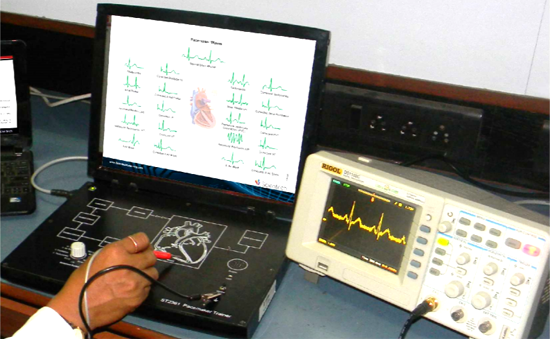


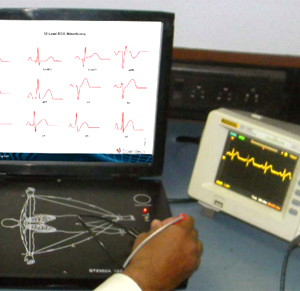
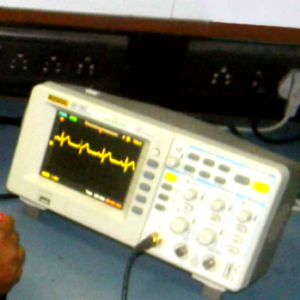
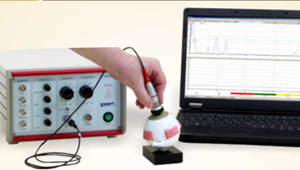


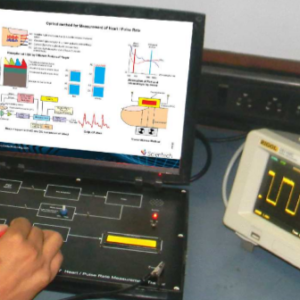
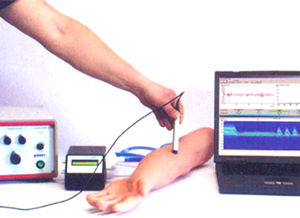


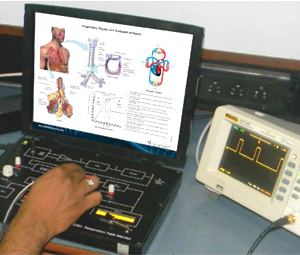
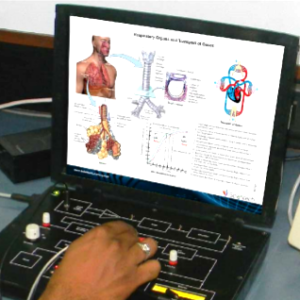
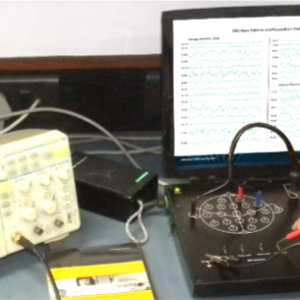
Reviews
There are no reviews yet.